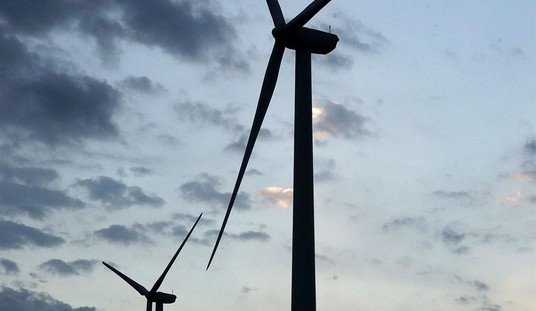First the best-run, according to Wall Street 24/7’s annual ranking: North Dakota, Wyoming, Nebraska, and Utah, with Iowa rounding out the Top 5.
They have in common low amounts of debt per capita, low unemployment rates, business-friendly tax structures, and several of them are home to hydraulic fracturing and other energy booms. There’s also a high correlation between a well-run state and a high percentage of residents with high-school diplomas. And one more thing. What is it? Ah, yes, they all have Republican governors. I’m sure it’s just a coincidence. What does a governor have to do with running a state’s affairs, after all?
The worst-run: California, Rhode Island, Illinois, Arizona and New Jersey, making the bottom five home to two Democratic governors, two Republicans, and one Lincoln Chafee.
Let’s hear just why California is at the bottom of the heap:
> Debt per capita: $4,008 (18th highest)
> Budget deficit: 20.7% (17th largest)
> Unemployment: 11.7% (2nd highest)
> Median household income: $57,287 (10th highest)
> Pct. below poverty line: 16.6% (18th highest)California is 24/7 Wall St.’s “Worst Run State” for the second year in a row. Due to high levels of debt, the state’s S&P credit rating is the worst of all states, while its Moody’s credit rating is the second-worst. Much of California’s fiscal woes involve the economic downturn. Home prices plunged by 33.6% between 2006 and 2011, worse than all states except for three. The state’s foreclosure rate and unemployment rate were the third- and second-highest in the country, respectively. But efforts to get finances on track are moving forward. State voters passed a ballot initiative to raise sales taxes as well as income taxes for people who make at least $250,000 a year. While median income is the 10th-highest in the country, the state also has one of the highest tax burdens on income. According to the Tax Foundation, the state also has the third-worst business tax climate in the country.
Despite its sunny shores and mountain heights, glorious vineyards and gloriouser weather, Hollywood and Silicon Valley, the Golden state has become—how you say?— kind of a crapfest. Since California’s is the righteous path our liberal betters so long for us to take as a nation, let’s do check in and see how it’s working out for them.
The state passed a ballot amendment hiking taxes on the rich in November. California already had the most progressive state tax system in the nation and has been deficit spending out the wazoo throughout the recession. By my Keynesian calculations, the California economy should be booming, its unemployment rate low, its deficit and debt problems solved, and all of its “investments” should be yielding great results for those in need and in public schools.
California’s new “temporary” tax hike on the wealthy is expected to bring in $6 billion a year, according to the LA Times (estimates vary slightly). What is California’s debt?
The task force estimated that the burden of debt totaled at least $167 billion and as much as $335 billion. Its members warned that the off-the-books debts tended to grow over time, so that even if Mr. Brown should succeed in pushing through his tax increase, gaining an additional $50 billion over the next seven years, the wall of debt would still be there, casting its shadow over the state.
Yes, I should say so. California has already pledged the equivalent of the entire tax hike and more to a high-speed train boondoggle. Proponents of tax increases will brag that this hike has come close to fixing California’s annual deficit, but let’s see how much California spends on debt service alone, to get an idea of how far this $6 billion a year will go. The 2012-2013 California state budget projection:
General Fund debt service expenditures will increase by a net of $24.6 million (0.46 percent), to a total of $5.4 billion, as compared to the revised current year estimate…
While General Fund debt service is estimated to increase only slightly in the budget year, General Fund debt service has been a fast‐growing area of the Budget. In 2002‐03 General Fund debt service was $2.1 billion, or 2.9 percent of revenues, versus $5.4 billion, or 5.6 percent of estimated revenues, in 2012‐13. This trend is expected to continue through the end of this decade, with debt service projected to peak at $7.5 billion in 2019‐20
It should also be noted, the promise of maybe closing this year’s deficit is predicated on whether “lawmakers can resist more spending and the economy continues to improve.” I present to you, a supermajority Democratic legislature. Also, this delicious paragraph from the L.A. Times:
The election wasn’t even over Tuesday when state Treasurer Bill Lockyer’s phone started ringing. Activists of all stripes had the same message for him: With voters apparently poised to approve billions of dollars in tax hikes, it was time to spend more money.
“They had to be reminded the money has already been spent,” Lockyer said.
As for the economy, California has the second-highest unemployment rate in the nation, well above 10 percent. Texas— bizarro California, being close in size and population and nearly opposite in political disposition— is a little over 6 percent. As Conn Carroll noted in the Washington Examiner:
There are fewer private-sector jobs in the state (California) today, 11.9 million, then there were in 2000, 12.2 million.
And thanks to liberal welfare requirements, a third of all the nation’s welfare recipients live in California despite the state only containing one-eighth of the national population.
Contrast those numbers with Republican-controlled Texas, where private-sector jobs have grown from 7.8 million in 2000 to 9 million today.
Carroll also notes California poverty is high as is that most important of liberal priorities— income inequality (higher than in Texas)—while test scores remain low:
Meanwhile, California eighth-graders finished ahead of only Mississippi and District of Columbia students on reading and math test scores in 2011.
Texas, on the other hand, showed test scores for eight-graders above California and often above the national average across its white, black, and Hispanic populations in mathematics, reading, and science.
Maybe that’s why everyone’s leaving California, according to a Manhattan Institute study:
Since 1990, domestic migration to California has flipped to a deficit. In the last two decades, the state lost nearly 3.4 million residents through migration to other states. In other words, it lost about four-fifths of what it had gained through domestic migration in the previous 30 years. Foreign immigration filled the gap only partially. Inflows from overseas peaked at 291,191 in 2002 and sank to just 164,445 in 2011. Meanwhile, net domestic out-migration has averaged 225,000 a year over the past ten years.
Which are we going to be? California or Texas?
Don’t blame me. I voted for him.









Join the conversation as a VIP Member